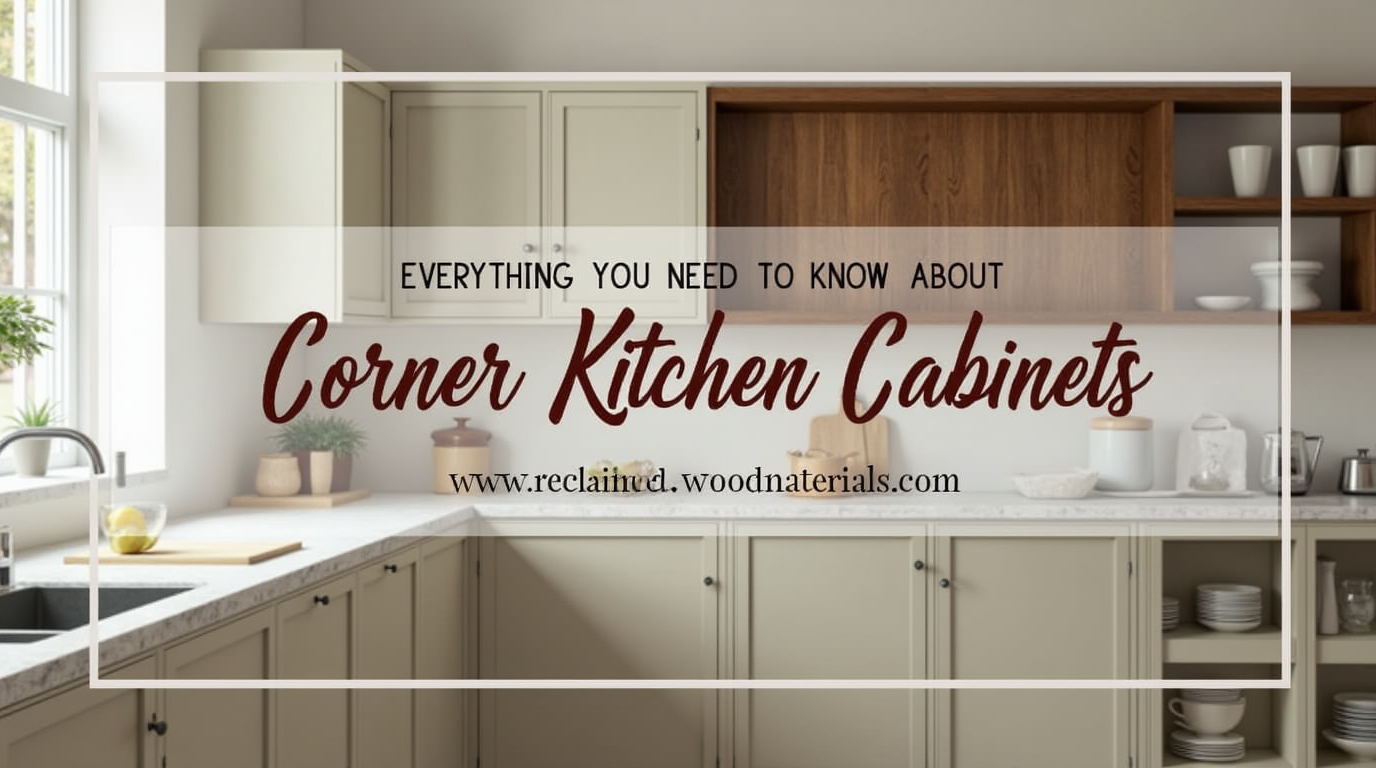The Importance of Corner Kitchen Cabinets
Corner kitchen cabinets are a vital element in modern kitchen design, playing a key role in effectively utilizing space. When it comes to kitchens, efficient organization and distribution of items are essential factors that impact the cooking experience and ease of movement. Corner cabinets address these needs by providing an innovative solution for the underutilized corners that can pose a challenge in interior design.
Corner kitchen cabinets contribute to increasing the available storage space, allowing users to store kitchen tools and ingredients in a more organized and efficient manner. Instead of leaving corners neglected or wasted, these cabinets can be transformed into practical storage areas that are beautifully integrated into the overall kitchen design.
Moreover, corner kitchen cabinets also offer aesthetic benefits. They can be a part of the kitchen’s overall design, contributing to a modern and cohesive look. By choosing the right colors and materials, corner cabinets can add a touch of elegance and contemporary flair to the space.
Thus, corner kitchen cabinets are a smart investment for anyone looking to enhance their cooking experience and organization in the kitchen. By creatively utilizing corners, it is possible to transform the area into a more comfortable and efficient place, making cooking a more enjoyable and productive activity.
Table of Contents
Understanding Corner Kitchen Cabinets
Definition of Corner Kitchen Cabinets
Corner kitchen cabinets are specially designed cabinets that fit into the corners of a kitchen, allowing homeowners to maximize their storage space. Unlike standard cabinets, corner cabinets utilize the often neglected and hard-to-reach areas of the kitchen, providing a functional solution for organizing pots, pans, and other kitchen essentials. These cabinets can come in various shapes and styles, often featuring rotating shelves, pull-out drawers, or lazy Susans, making it easier to access stored items while maintaining an organized appearance.
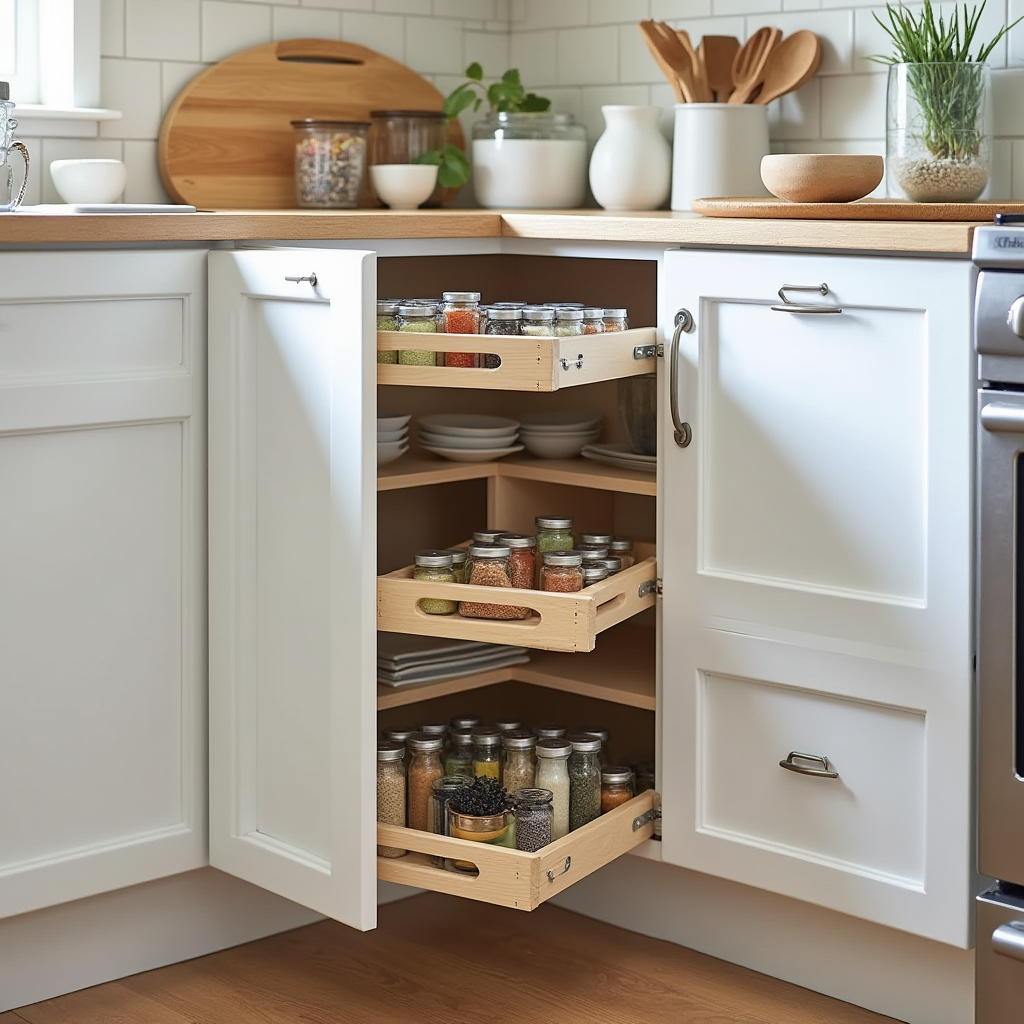
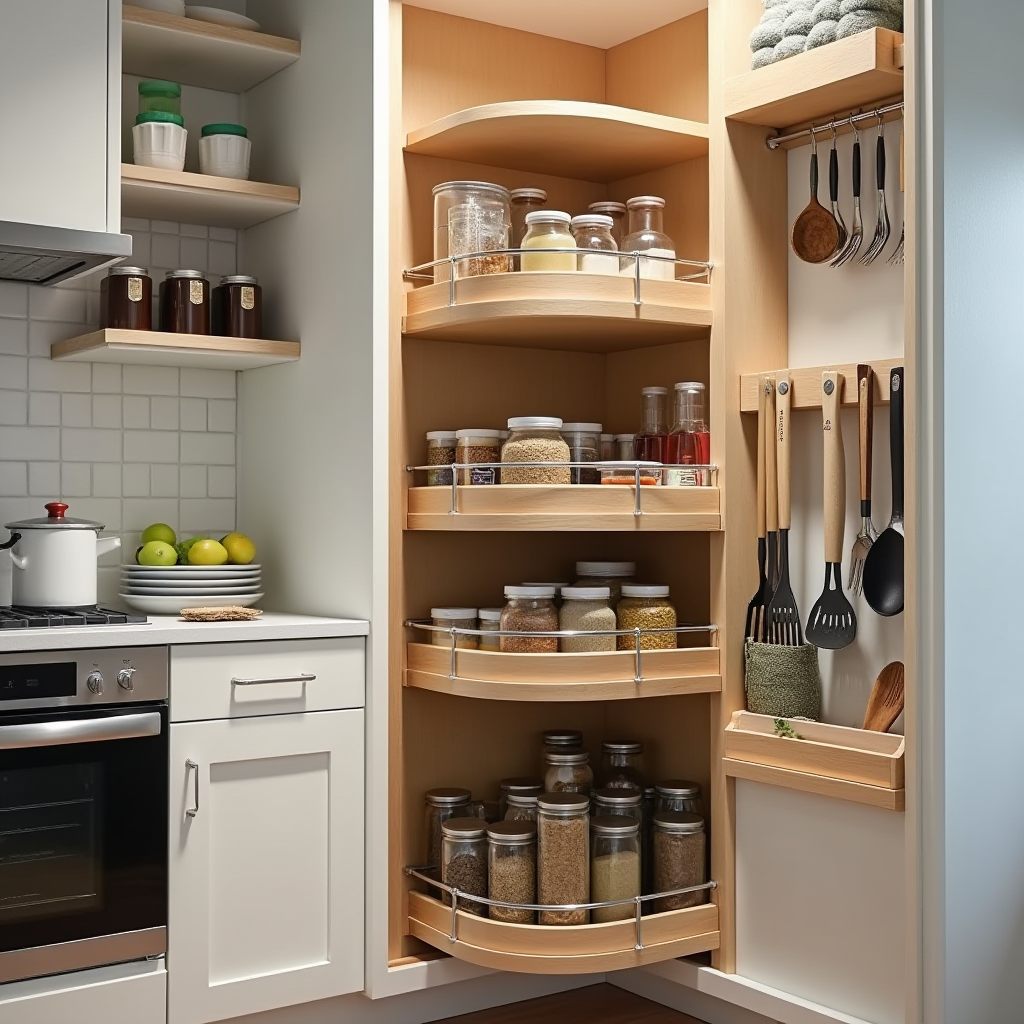
Types of Corner Kitchen Cabinets
Lazy Susan Cabinets:
These cabinets feature a circular rotating shelf that allows for easy access to items stored in the back. Lazy Susans are ideal for storing canned goods, spices, or baking supplies, as they minimize the need to reach deep into the cabinet.
Bi-Fold Door Cabinets:
Bi-fold cabinets open up like a pair of doors, providing a wide entrance to the cabinet’s interior. This design allows for easy access to the entire cabinet, making it suitable for storing larger items.
Corner Drawer Cabinets:
This design features drawers that pull out from the corner, making it easier to access items without having to reach into a deep cabinet. These drawers can be used for utensils, kitchen tools, or other smaller items.
L-Shaped Corner Cabinets:
L-shaped cabinets utilize the corner space in a way that maximizes storage while maintaining a streamlined look. They can be customized to fit specific kitchen layouts and can include shelves, drawers, or a combination of both.
Pull-Out Pantry Cabinets:
These cabinets are designed to pull out from the corner and can be used for storing pantry items like dry goods, snacks, or small appliances. They provide easy access to items while keeping them hidden from view when not in use.
Open Shelving Corner Cabinets:
Corner cabinets can be designed with open shelves for those who prefer a more open design. This allows easy access to frequently used items and creates an airy feel in the kitchen.
Benefits of Corner Kitchen Cabinets
1. Maximizing Space
Corner kitchen cabinets make up the most often underutilized areas in the kitchen. These cabinets allow homeowners to take advantage of corners that would otherwise remain empty or difficult to access. By providing additional storage in these spaces, corner cabinets help to create a more efficient kitchen layout, ensuring that every inch is used effectively.
2. Improved Accessibility
One of the primary advantages of corner kitchen cabinets is the ease of access they provide. With features such as lazy Susans, pull-out drawers, or bi-fold doors, homeowners can easily reach items stored deep within the cabinet. This accessibility not only makes cooking and meal prep more efficient but also reduces the frustration of digging through cluttered cabinets to find what you need.
3. Enhanced Organization
Corner cabinets offer a great way to keep your kitchen organized. By utilizing specialized storage solutions, such as rotating shelves or pull-out trays, these cabinets can help you categorize and store items in a way that is logical and easy to navigate. An organized kitchen not only looks better but also makes cooking and cleaning more enjoyable.
4. Aesthetic Appeal
Beyond their functional benefits, corner kitchen cabinets can also add beauty to your kitchen design. Available in various styles, finishes, and materials, these cabinets can be tailored to match the overall aesthetic of your kitchen. Whether you prefer a modern, sleek look or a more traditional, rustic feel, corner cabinets can enhance the visual appeal of your space, making it more inviting and stylish.
In summary, corner kitchen cabinets offer a range of benefits, from maximizing storage space to improving organization and enhancing the overall aesthetic of your kitchen. By incorporating these cabinets into your kitchen design, you can create a more functional and visually pleasing cooking environment.
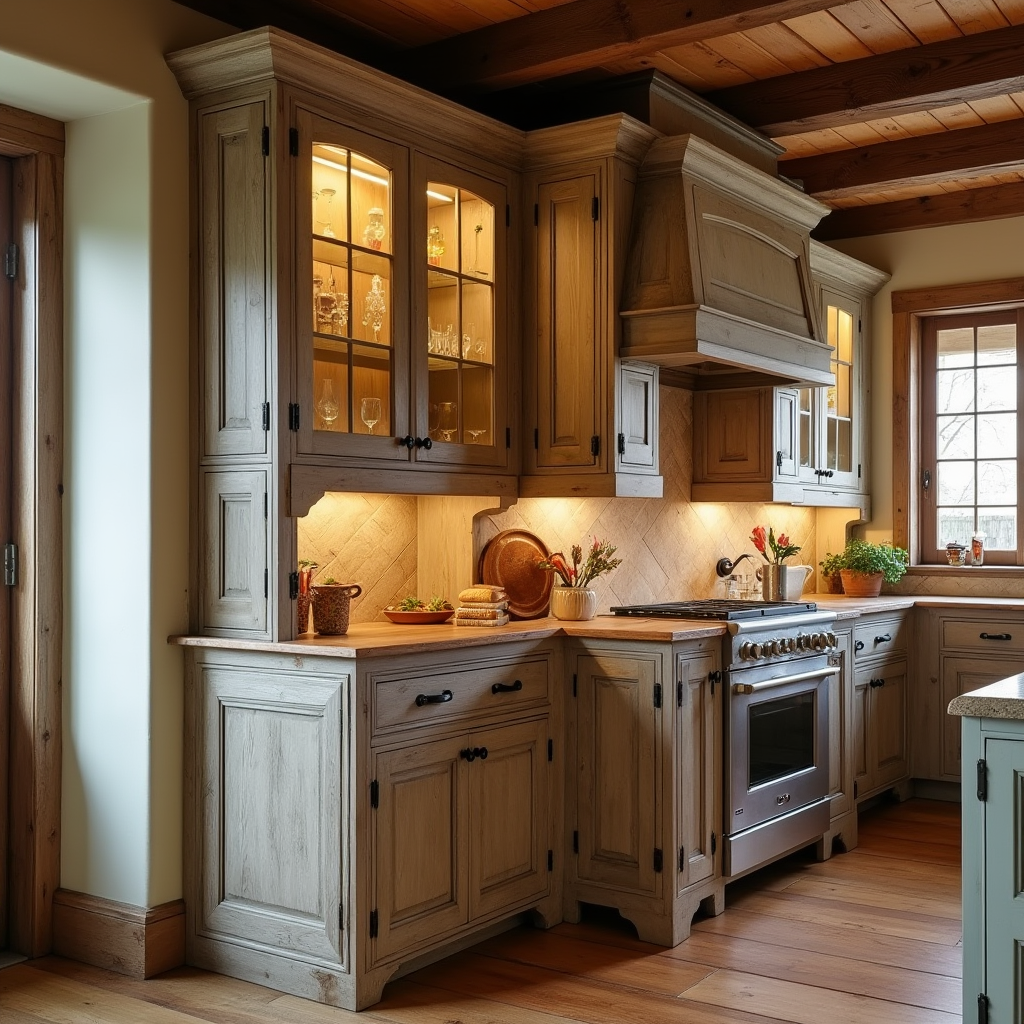
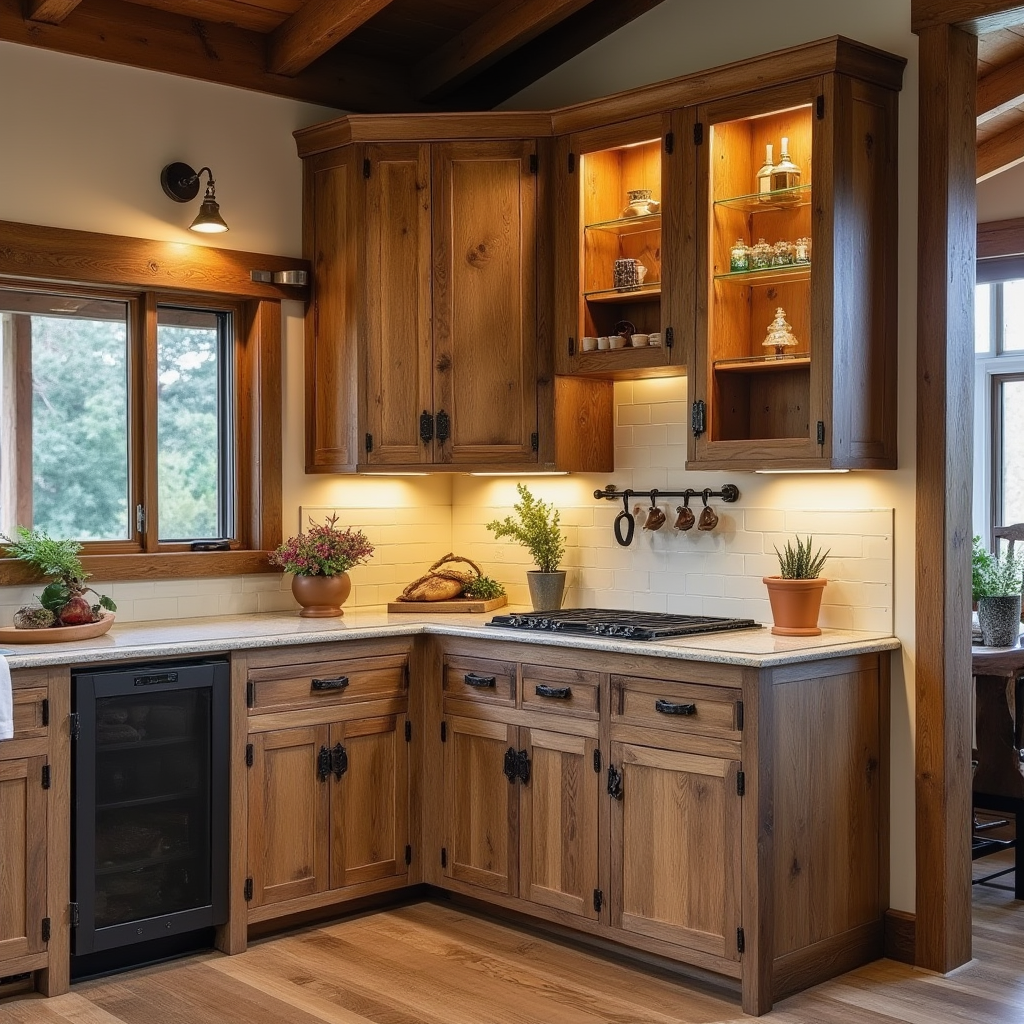
How to Choose the Right Corner Kitchen Cabinet
1. Measuring the Space
The first step in selecting the right corner kitchen cabinet is to accurately measure the available space. This includes not only the corner’s dimensions but also the adjacent cabinets’ height and width. Ensure that you take into account any obstacles, such as windows, appliances, and doorways, which might affect the placement of the cabinet. A well-measured space will help you choose a cabinet that fits perfectly without crowding the kitchen.
2. Choosing the Design
The design of the corner cabinet should complement your overall kitchen style. Consider factors such as color, finish, and door style. Options range from traditional raised-panel doors to sleek, modern flat-front designs. Additionally, think about the cabinet layout—do you want a standard cabinet, a lazy Susan, or a pull-out design? The right design will enhance your kitchen’s aesthetics and functionality.
3. Materials and Quality of Construction
The materials used in your corner kitchen cabinet can greatly affect its durability and appearance. Common materials include plywood, particleboard, and solid wood. Solid wood is often considered the highest quality due to its strength and longevity. Pay attention to the construction quality, including joint methods, finish, and hardware. A well-constructed cabinet will not only look better but also stand the test of time.
4. Storage Systems
Finally, consider the storage systems available within the corner cabinet. Look for features that enhance accessibility and organization, such as adjustable shelving, pull-out drawers, and lazy Susans. These systems can help maximize the use of space and make it easier to find and store kitchen items. Assess your cooking and storage needs to choose a cabinet that best suits your lifestyle.
By taking into account the space measurements, design preferences, material quality, and storage systems, you can select the perfect corner kitchen cabinet that meets your needs and enhances your kitchen’s functionality and style.
Tips for Installing a Corner Kitchen Cabinet
1. Professional Installation
While some homeowners may opt for DIY installation, enlisting the help of a professional can ensure that your corner kitchen cabinet is installed correctly and securely. Professionals have the experience and tools necessary to handle complex installations, particularly in corners where precision is crucial. They can also help navigate any unforeseen issues, such as uneven floors or walls, to guarantee that your cabinet is both functional and aesthetically pleasing.
2. Regular Maintenance
Once your corner kitchen cabinet is installed, regular maintenance is key to keeping it in good condition. This includes cleaning the surfaces with appropriate cleaners that won’t damage the finish and checking for any loose screws or hardware. Regularly inspect the cabinet’s hinges and any moving parts to ensure they function smoothly. Preventative maintenance can extend the life of your cabinet and keep it looking its best.
3. Updating the Design
Over time, kitchen styles may change, and you might find that your corner cabinet no longer fits your aesthetic or functional needs. Consider updating the cabinet’s look by repainting or refinishing the surfaces, changing the hardware, or even adding new storage solutions. This can breathe new life into your kitchen without the need for a complete remodel. Staying open to design updates ensures that your corner kitchen cabinet continues to meet your style and functionality requirements.
Ideas for Organizing Corner Kitchen Cabinets
1. Shelf Organization
Organizing the shelves in your corner kitchen cabinet can maximize space and improve accessibility. Here are some effective strategies:
Adjustable Shelving: Install adjustable shelves to accommodate items of varying heights. This allows you to customize the space according to your needs and makes it easier to store taller items like pots and pans.
Stackable Bins: Use stackable bins to categorize similar items. For example, group baking supplies, snacks, or cooking oils together. This not only saves space but also makes it easier to find what you need quickly.
Lazy Susans: Consider adding a lazy Susan to the corner cabinet. This rotating tray can help you access items stored in the back without having to dig through everything. It’s perfect for storing condiments, spices, or small jars.
2. Utilizing Smart Storage Tools
Incorporating smart storage solutions can significantly enhance the functionality of your corner kitchen cabinet:
Pull-Out Drawers: Install pull-out drawers specifically designed for corner cabinets. These allow you to easily access items that would otherwise be hard to reach in the back. Look for options with dividers to keep things organized.
Vertical Dividers: Use vertical dividers to separate baking sheets, cutting boards, and platters. This prevents them from toppling over and makes it easier to grab the one you need.
Magnetic Strips: Consider adding magnetic strips inside the cabinet doors to hold metal utensils or spice containers. This saves space and keeps essential items within easy reach.
3. Adding Lighting
Proper lighting can enhance both the aesthetics and functionality of your corner kitchen cabinet:
Under-Shelf Lighting: Install LED strip lights or puck lights under the shelves to illuminate the contents of your cabinet. This makes it easier to find items, especially in darker corners.
Motion-Sensor Lights: Consider using motion-sensor lights that turn on when you open the cabinet door. This provides instant visibility without needing to fumble for a switch.
Accent Lighting: Use accent lighting to highlight decorative items or dishware stored in the corner cabinet. This adds a touch of style while also enhancing visibility.
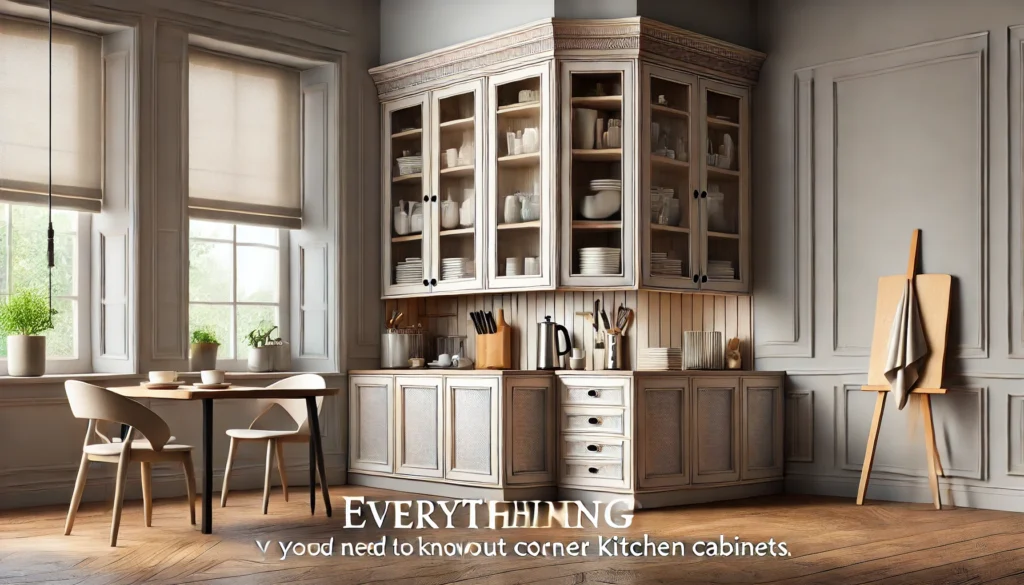
Corner Kitchen Cabinets in Different Design Styles
1. Traditional Design
Traditional kitchen designs exude warmth and timeless elegance, and corner kitchen cabinets play a crucial role in enhancing this aesthetic.
Ornate Detailing: Traditional corner cabinets often feature intricate woodwork, moldings, and embellishments. Raised-panel doors, decorative hardware, and crown molding can add a touch of sophistication to your kitchen.
Rich Wood Finishes: Dark wood finishes like cherry, mahogany, or walnut are popular in traditional kitchens. These materials not only provide durability but also create a cozy and inviting atmosphere.
Glass Fronts: Incorporating glass-front doors in your corner cabinets allows you to display fine china or decorative pieces, adding a personal touch while keeping the overall design cohesive.
Symmetry and Balance: Traditional designs often emphasize symmetry. Positioning corner cabinets strategically can help create a balanced look, especially when paired with matching cabinetry on adjacent walls.
2. Modern Design
Modern kitchen designs focus on simplicity, functionality, and clean lines, with corner cabinets serving as both practical and stylish elements.
Sleek Lines and Minimalism: In modern kitchens, corner cabinets are characterized by flat-panel doors and minimal ornamentation. A sleek and understated design keeps the space feeling open and airy.
Bold Colors: Bright and bold colors or monochromatic schemes are common in modern kitchens. Consider using high-gloss finishes or contrasting colors for corner cabinets to make a statement.
Integrated Appliances: Modern corner cabinets often incorporate built-in appliances or seamless storage solutions. This integration creates a streamlined look and maximizes the use of space without cluttering the design.
Open Shelving: Instead of closed cabinet doors, open shelving can be used in corner cabinets for a modern twist. This approach not only makes items easily accessible but also allows you to showcase stylish cookware and kitchen decor.
3. Rustic Design
Rustic kitchen designs embrace natural materials and a warm, inviting atmosphere. Corner kitchen cabinets can enhance this cozy feel.
Reclaimed Wood: Using reclaimed wood for corner cabinets adds character and uniqueness. The natural imperfections and varied textures of reclaimed materials contribute to a rustic charm.
Farmhouse Aesthetics: Incorporating farmhouse-style elements, such as shiplap backing or distressed finishes, can give corner cabinets a cozy, homey feel. Adding decorative accents like barn-style hardware further emphasizes the rustic design.
Open and Closed Storage: Combining open shelving with traditional cabinet doors creates an inviting display while providing ample storage. Use the open space to showcase rustic dishware or vintage kitchen tools.
Natural Colors: Earthy tones like greens, browns, and creams are often featured in rustic kitchens. Choose cabinet colors that reflect the natural surroundings to create a harmonious and warm environment.
Costs Associated with Corner Kitchen Cabinets
1. Budgeting
When planning for corner kitchen cabinets, it’s essential to establish a realistic budget that encompasses all aspects of the project. This budget should include not only the cost of the cabinets themselves but also other related expenses such as installation, accessories, and potential renovations. Consider the following:
Cost of Cabinets: Corner cabinets vary significantly in price depending on the materials, design, and brand. It’s crucial to compare different options and select cabinets that align with your budget without compromising quality.
Installation Costs: Professional installation can add to the overall cost, but it’s often worth it to ensure that the cabinets are properly fitted and secure. Factor in labor costs, which may vary based on your location and the complexity of the installation.
Accessories and Hardware: Don’t forget to include costs for hardware, such as handles, knobs, and pull-out shelves, which can enhance functionality and aesthetics. These accessories can add to the overall cost but also elevate the look of your cabinets.
2. Cost Options
There are various cost options available for corner kitchen cabinets, allowing homeowners to choose according to their financial constraints and design preferences:
Stock Cabinets: These are pre-manufactured and typically more affordable than custom options. Stock cabinets offer limited design choices but are available in standard sizes and finishes, making them a budget-friendly option.
Semi-Custom Cabinets: Semi-Custom cabinets provide more flexibility in terms of size and design compared to stock options. While they are pricier than stock cabinets, they still offer a good balance between customization and cost.
Custom Cabinets: For those seeking a unique design tailored to their specific space, custom cabinets are the way to go. Although they come at a higher price point, custom cabinets allow for personalized features, materials, and finishes.
Used or Reclaimed Cabinets: Consider sourcing used or reclaimed corner cabinets as a cost-effective and environmentally friendly option. This approach can save money while adding character to your kitchen.
3. Conclusion
When budgeting for corner kitchen cabinets, it’s crucial to consider all associated costs to avoid surprises during the renovation process. Weighing the options of stock, semi-custom, and custom cabinets will help you find the best fit for your needs and budget.
Importance of Maximizing Space in the Kitchen
Maximizing space in the kitchen is essential for creating a functional and efficient cooking environment. Corner kitchen cabinets play a vital role in achieving this goal by utilizing otherwise wasted space. Here are several reasons why it’s important to make the most of kitchen space:
Enhanced Functionality: Efficient use of corner space improves kitchen functionality by providing additional storage for pots, pans, and pantry items, making them easily accessible when cooking.
Improved Organization: Corner cabinets can be designed with pull-out shelves or lazy Susans to help organize kitchen items, reducing clutter and ensuring everything has its place.
Better Workflow: A well-organized kitchen allows for a smoother workflow, making meal preparation and cooking more enjoyable and efficient.
Aesthetic Appeal: Maximizing space can lead to a more visually appealing kitchen. Well-placed cabinets and organized items contribute to a clean, tidy look that enhances the overall aesthetic of the space.
In summary, investing in corner kitchen cabinets and maximizing kitchen space is crucial for creating a functional, organized, and visually appealing kitchen that meets your cooking and entertaining needs.
FAQ
1. What is a corner kitchen cabinet?
A corner kitchen cabinet is a specialized cabinet designed to fit into the corner of a kitchen. It utilizes the often-wasted corner space to provide additional storage and organization options.
2. What are the different types of corner kitchen cabinets?
There are several types of corner kitchen cabinets, including:
- Lazy Susans: Rotating shelves that provide easy access to items.
- Diagonal Corner Cabinets: These have a diagonal front for a unique look and better accessibility.
- L-shaped Corner Cabinets: They fit snugly into the corner, maximizing storage space.
- Pull-out Corner Cabinets: These have sliding shelves for easy access to stored items.
3. How can corner kitchen cabinets maximize space?
Corner kitchen cabinets can maximize space by utilizing the often overlooked corner areas of a kitchen, providing additional storage without taking up extra floor space. They can also include smart storage solutions, such as pull-out shelves and Lazy Susans.
4. What should I consider when choosing a corner kitchen cabinet?
When choosing a corner kitchen cabinet, consider the following:
- Space Measurements: Ensure the cabinet fits your kitchen’s dimensions.
- Design Style: Choose a style that complements your kitchen decor.
- Material Quality: Look for durable materials that suit your needs.
- Storage Solutions: Opt for cabinets with innovative storage options for better organization.
5. How do I install a corner kitchen cabinet?
For installation, it’s recommended to hire a professional to ensure proper fitting and alignment. They can also help with any adjustments needed for plumbing or electrical fixtures in the area.
6. What are some tips for organizing a corner kitchen cabinet?
To organize a corner kitchen cabinet effectively:
- Use tiered shelving or risers to maximize vertical space.
- Incorporate pull-out bins or baskets for easy access to items.
- Consider adding lighting to illuminate the interior, making it easier to find what you need.
7. How much do corner kitchen cabinets cost?
The cost of corner kitchen cabinets can vary widely based on materials, design, and installation. It’s important to set a budget and compare options to find a cabinet that fits both your style and your finances.
8. Are corner kitchen cabinets suitable for all kitchen styles?
Yes, corner kitchen cabinets can be designed to fit various kitchen styles, including traditional, modern, and rustic. Choosing the right materials and finishes can help ensure that they blend seamlessly with your overall kitchen design.

